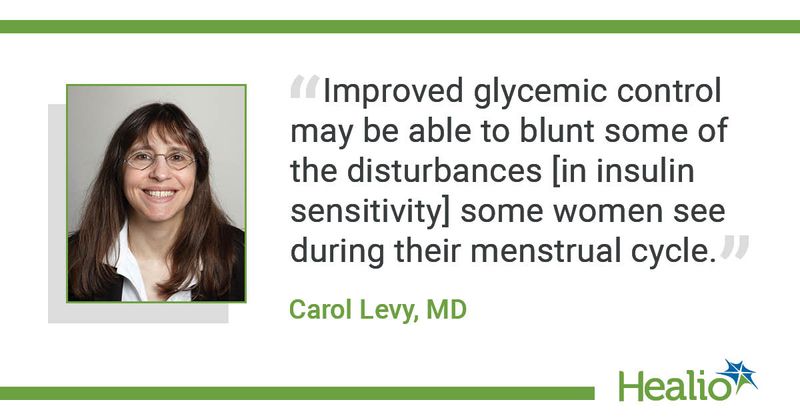No changes in glucose, insulin delivery during menstrual cycle with artificial pancreas
A small group of women with type 1 diabetes using a hybrid closed-loop insulin delivery system maintained similar glycemic levels and insulin delivery throughout their entire menstrual cycle, according to study data
In findings published in Diabetes Technology and Therapeutics, a group of 16 women with type 1 diabetes had no significant changes in glycemic control during the luteal phase, menstrual phase and the rest of their menstrual cycle. The findings are the first step toward exploring the potential benefits of using a hybrid closed-loop system to optimize control in women struggling with glycemic control during certain phases of the menstrual cycle, according to Carol Levy, MD, clinical director of the Mount Sinai Diabetes Center.

“What’s been a challenge for clinicians is how to help manage patients who struggle with glycemic changes around the menstrual cycle and provide them guidance,” Levy told Healio. “This is a subanalysis of a larger study. We thought it would be interesting to see what insulin delivery and glycemic metrics we would get around the menstrual cycle. We took a small group of women within the larger study who agreed to do it. What we found was there weren’t marked changes with a hybrid closed-loop system.”
Levy and colleagues enrolled 16 menstruating women with type 1 diabetes from the International Diabetes Closed Loop trial to participate in a substudy (69% white, mean age, 31 years). Participants installed a tracking application on their personal phone to track menstrual cycle phases. All participants used a t:slim X2 insulin pump with Control-IQ technology (Tandem Diabetes Care) and the Dexcom G6 continuous glucose monitoring system. CGM metrics and insulin delivery during the mid-late luteal phase, menstrual phase and the rest of the menstrual cycle were analyzed for the cohort.
Data was reported for a mean of 145 days and six menstrual cycles. The cohort had a mean 24-hour glucose level of 161 mg/dL during the menstrual phase, 165 mg/dL during the luteal phase and 159 mg/dL during the rest of the cycle. Mean time in range was 69% in the menstrual phase, 67% during the luteal phase and 69% during the rest of the cycle.
Insulin delivery was unchanged during the menstrual cycle, with median basal rates remaining at 0.28 U/kg during all three phases. Median daily bolus insulin delivery rates were 0.31 U/kg during the luteal phase and 0.29 U/kg during the menstrual phase and rest of the cycle.
“What’s unique about this population is they were all well controlled because they were on the closed-loop system, so perhaps improved glycemic control may be able to blunt some of the disturbances [in insulin sensitivity] some women see during their menstrual cycle,” Levy said. “Women are also sometimes chasing these high blood sugars that they see around the menstrual cycle. The automated system may provide some benefit and not require much larger differences in insulin delivery, but we do not yet know all of the answers.”
Levy said future studies should focus on women who report having challenges maintaining a stable glycemic control throughout their menstrual cycle and analyze the effects of a hybrid closed-loop system.
“It may not even be that putting them on a closed-loop system will resolve their fluctuating glucose levels,” Levy said. “The closed-loop system with adjustments and other settings may really help them.”
For more information:
Carol J. Levy, MD, can be reached at carol.levy@mssm.edu.
